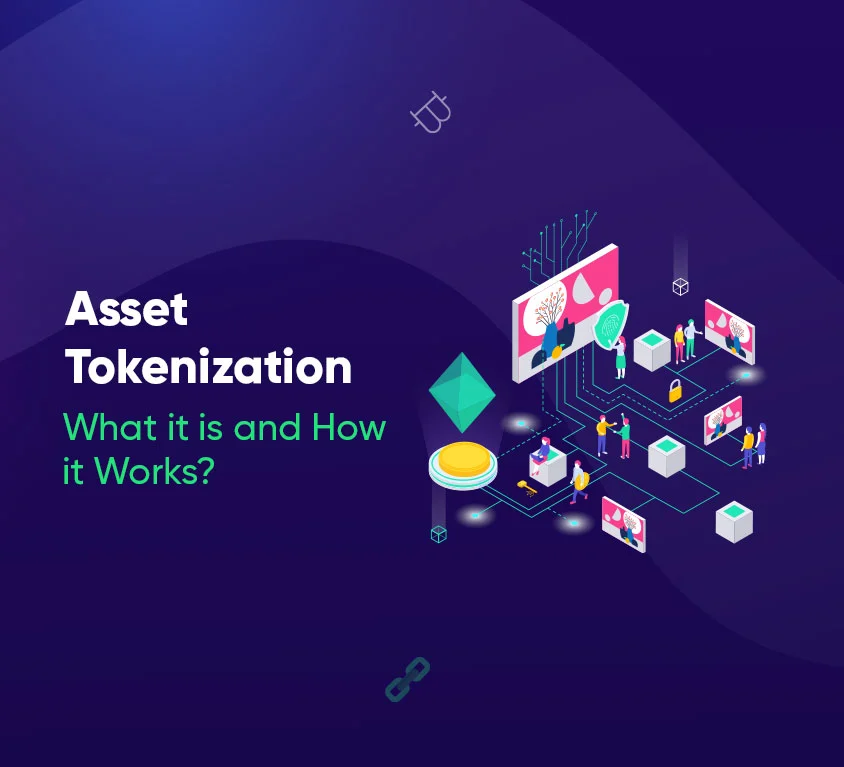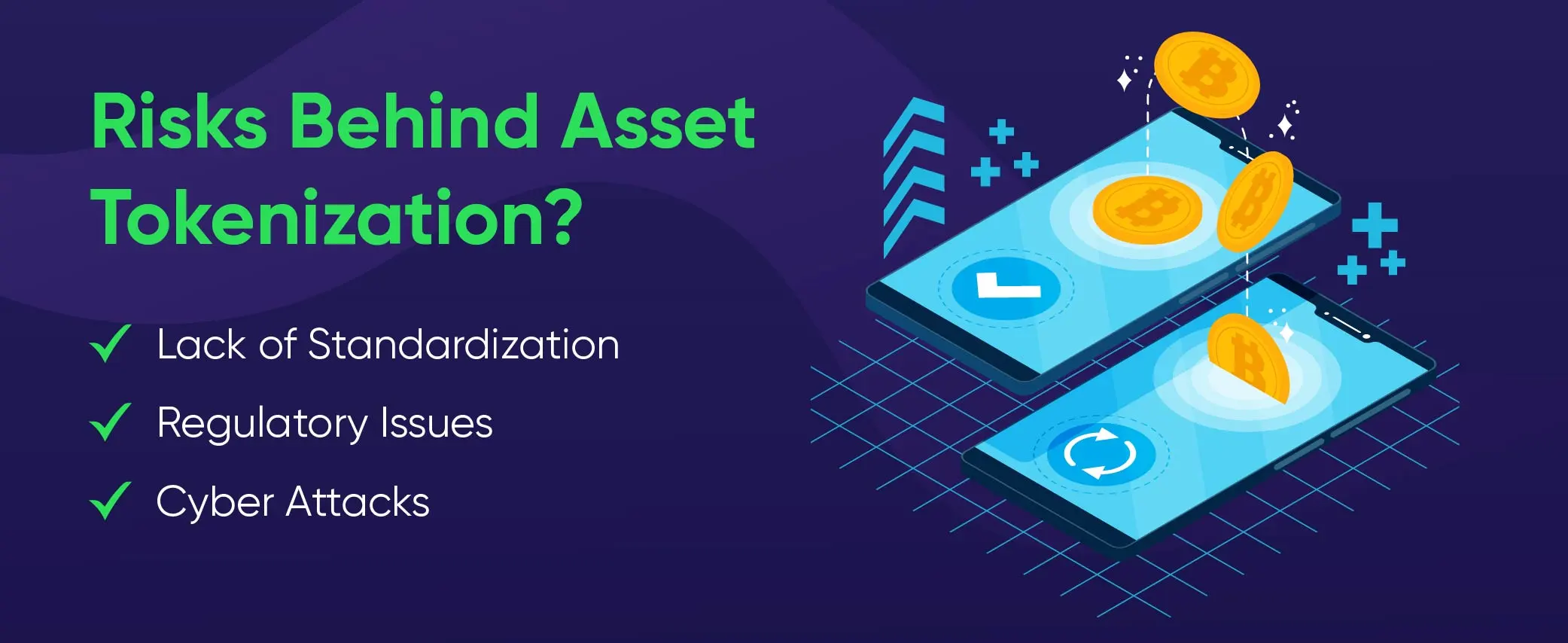
Introduction
Blockchain & Web3 Services Trusted By Leaders
- Develop innovative solutions using our state-of-the-art blockchain expertise.
- Achieve accelerated growth with robust & scalable Web3 consulting.
- Unlock 360-degree security with our top-rated blockchain development.
Asset Tokenization: What it is and How it Works?
The development of financial instruments and the quest for novel ownership representation can be linked to the history of tokenization. Conventional securities, like stocks, were vulnerable to inefficiencies and counterfeiting. Electronic trading platforms were adopted as a result of the dematerialization of securities. It increases efficiency while preserving centralized control. Blockchain technology brought digital scarcity and ownership representation through cryptographic tokens, first demonstrated with Bitcoin in 2009. In 2015, Ethereum unveiled smart contracts, which made it possible to create unique tokens. With the development of blockchain technology, specialized tokenization platforms appeared, making it easier to tokenize assets other than cryptocurrencies. Although there have been difficulties with laws and regulations, the tokenization scene today is varied and marked by greater liquidity, worldwide accessibility, and fractional ownership. This guide will take you into the details of asset tokenization, explaining its types, definition, workings, advantages, and potential future.What is Asset Tokenization?
Asset Tokenization is a process of creating digital tokens on the blockchain that represent ownership of real-life assets. This includes; Investments, real-life assets, art, or access to any company’s services.Types of Tokenized Assets
Tokenized assets come in various forms, representing a diverse range of real-world assets that can be digitized and traded on blockchain platforms. There are different blockchain platforms that we have already discussed previously in a blog. Each type of tokenized asset brings its own unique characteristics and investment opportunities. Here are some prominent types of tokenized assets:- Real Estate Tokens: Real estate tokenization involves transforming ownership rights of real estate properties into digital tokens. Each token represents a share or fraction of the underlying property.
- Security Tokens: Security tokens represent ownership in traditional financial instruments such as stocks, bonds, and funds. These tokens are subject to regulatory compliance and often come with legal protections.
- Art and Collectibles Tokens: Tokenizing art and collectibles involves creating digital representations of physical artworks or collectible items. Each token signifies ownership and can be traded on blockchain platforms.
- Commodity Tokens: Commodity tokens represent ownership or exposure to physical commodities such as gold, silver, or other natural resources. These tokens allow investors to diversify into commodity markets.
- Utility Tokens: Utility tokens provide access to a specific product, service, or platform within a blockchain ecosystem. These tokens are often used for transactions, governance, or accessing certain functionalities.
- Tokenized Funds (ETFs): Tokenized funds represent ownership in traditional investment funds or Exchange-Traded Funds (ETFs). These digital tokens provide a blockchain-based alternative to traditional fund ownership.
- Intellectual Property Tokens: Intellectual property tokens represent ownership or rights to intellectual property assets, such as patents, trademarks, or copyrights. These tokens enable creators to monetize their intellectual assets.
- Tokenized Debt Instruments: Tokenized debt instruments include digital representations of debt securities like bonds. These tokens may come with contractual obligations and interest payments.
How Does Asset Tokenization Work?
The rights to an asset are transformed into digital tokens on a blockchain through the asset tokenization process. Following their distribution, these tokens are registered on the blockchain, creating an open and unchangeable ownership record. Asset tokenization improves the efficiency, security, and transparency of ownership record management through this decentralized ledger. Furthermore, the tokenization process can incorporate smart contracts due to the programmable nature of blockchain technology. Smart contracts simplify procedures like dividend distribution, profit-sharing, and other contractual agreements by automating and enforcing the terms of the tokenized asset. The automation process improves productivity and lowers the complexity involved in managing traditional asset ownership. As the cryptocurrency ecosystem and blockchain continue to develop, asset tokenization is anticipated to have a significant impact on how people view, use, and invest in a variety of assets. It’s a revolutionary step toward a more universally accessible and effective financial system where everyone can enjoy the advantages of asset ownership.Benefits of Asset Tokenization
Asset tokenization leverages the power of blockchain technology to bring about a paradigm shift in the accessibility, efficiency, and transparency of traditional and alternative asset markets. These benefits collectively contribute to a more inclusive, liquid, and technologically advanced financial ecosystem. The benefits of asset tokenization extend beyond the initial advantages mentioned. Here are additional bullet points highlighting the key benefits of asset tokenization:
- Global Accessibility: Tokenization enables global participation, allowing investors from around the world to access and trade tokenized assets, breaking down geographical barriers.
- 24/7 Market Operation: Blockchain operates 24/7, providing continuous market access and allowing users to trade tokenized assets at any time, unlike traditional markets with specific operating hours.
- Automated Compliance: Smart contracts embedded in tokenized assets can enforce compliance automatically, ensuring that transactions adhere to predefined rules and regulations, reducing the need for intermediaries.
- Enhanced Liquidity: Tokenization increases liquidity by fractionalizing assets. Investors can buy and sell fractions of tokens, making high-value assets more accessible and tradable.
- Reduced Intermediaries: Tokenization streamlines the investment process by reducing the number of intermediaries involved in asset transactions, leading to faster and more cost-effective transactions.
- Smart Contract Automation: Smart contracts can automate various aspects of asset management, such as dividend distribution, voting rights, and other contractual obligations, improving efficiency and reducing administrative overhead.
- Portfolio Diversification: Tokenization allows for easy diversification of investment portfolios by offering exposure to a wide range of assets, including those that were traditionally difficult to access.
- Increased Security: Blockchain’s immutability ensures the security and integrity of ownership records. Once recorded on the blockchain, transactions are resistant to tampering or fraudulent activities.
- Lower Entry Barriers: Tokenization reduces the minimum investment threshold for certain assets, allowing a more inclusive investment environment and providing opportunities for a broader range of investors.
- Token Interoperability: Interoperability standards enable tokens from different platforms to function together seamlessly, fostering a more interconnected and versatile tokenized asset ecosystem.
- Programmable Assets: Tokenization allows for programmable assets, where the properties and functionalities of assets can be encoded into smart contracts, enabling innovative features and customization.
- Risk Mitigation: Tokenization can enhance risk management by providing real-time visibility into the ownership structure and history of assets, reducing information asymmetry and potential risks.
- Easier Transfer of Ownership: The transfer of ownership becomes more efficient and cost-effective through tokenization, as it can be executed with a simple blockchain transaction, minimizing paperwork and administrative processes.
- Democratization of Investments: Asset tokenization democratizes investment opportunities, allowing retail investors to participate in markets traditionally dominated by institutional players.

The Future of Asset Tokenization
The future of asset tokenization holds immense potential as regulatory frameworks evolve and technology advances. Increased adoption is expected across diverse asset classes, revolutionizing financial markets and investment landscapes. Here are some of the Future aspects involved in the advancement of asset tokenization;- Clearer frameworks for tokenized assets will increase confidence and adoption.
- Asset tokenization will extend its reach beyond real estate to commodities, intellectual property, and traditional financial instruments.
- Traditional finance and tokenized assets will blur, leading to increased adoption by established financial institutions.
- Common tokenization standards will emerge across different platforms, fostering collaboration between blockchain ecosystems.
- Technological advancements will lead to a more robust infrastructure for asset tokenization.
- Innovations in blockchain security will provide greater assurances of tokenized asset integrity and safety.
- Larger institutional players will enter the space, bringing additional capital and credibility.
- Specialized platforms will proliferate, offering tailored solutions for different asset classes.
- Broader adoption and fractionalization of assets will increase liquidity in tokenized markets.
- Decentralized Finance principles may become more integrated with tokenized assets.